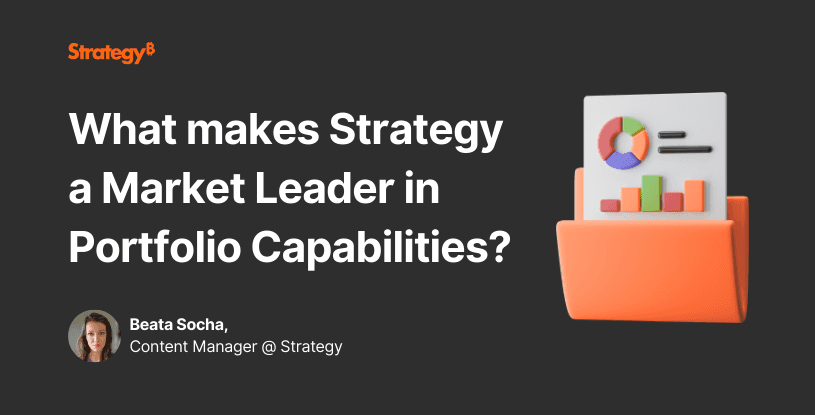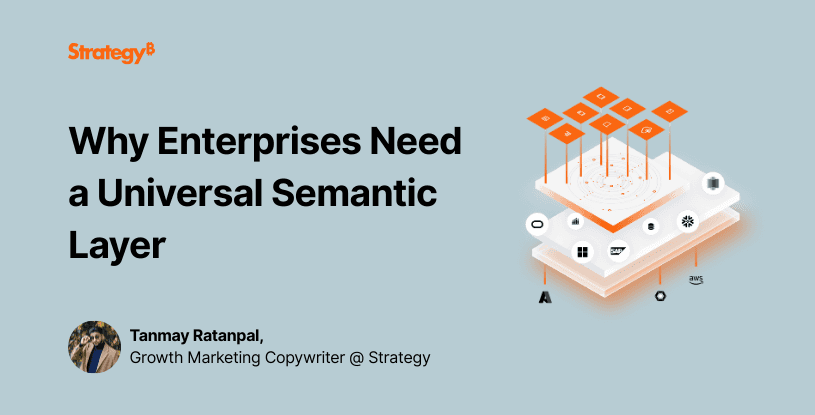Why Enterprise AI Projects Fail (And How a Semantic Layer Fixes It)
Many enterprise AI projects stall before they scale. Why? Dirty data, poor governance, and broken pipelines. This blog explores how an independent, universal semantic layer, like Strategy Mosaic, solves these challenges, ensuring your AI initiatives deliver real business value.
Enterprise AI in 2025: Big Promise, Bigger Problems
What makes AI so powerful for enterprises?
AI’s power lies in its ability to process vast amounts of data at unparalleled speed and scale. It automates repetitive tasks—from report generation to customer support, while performing hours of data analysis into seconds.
But AI is only as effective as the data that powers it.
Did you know that 49% of organizations cite complex data across legacy tools as a top barrier to AI readiness? And according to BCG, 74% still struggle to move beyond pilots into value‑creating AI deployments.
So, what’s holding these enterprise AI projects back? And how does a universal, independent semantic layer make the difference?
What Is Enterprise AI?
Enterprise AI refers to the integration of AI technologies to improve productivity across departments, processes, and workflows.
The “enterprise” part speaks to the scale and complexity of data collected from multiple systems, including:
Productivity tools like Excel, Teams, and Outlook
Cloud environments such as AWS, Azure, and GCP
Data warehouses like Snowflake, Amazon Redshift, and Google BigQuery
BI platforms including Strategy One, Tableau, and Power BI
Think AI-powered tools that enhance analytics, automate HR tasks, streamline quality checks, or assist customers through intelligent chatbots.
What Are the Benefits of Enterprise AI?
Enterprise AI doesn’t just serve executives—it empowers employees at every level by optimizing all types of data. When implemented successfully, it transforms how teams work by:
Automating repetitive tasks: From simplifying data entry to enhancing customer service, AI enables employees to focus on higher-impact, creative work.
Accelerating research & development: AI collects, refines, and reports data across labs and projects—delivering faster results with fewer errors.
Personalizing customer experiences: AI analyzes customer behavior, optimizes touchpoints, and helps frontline workers deliver more tailored, responsive service.
Enhancing security: AI automates threat detection, flags at-risk areas, and accelerates incident response—giving teams greater control over sensitive data.
The result? Enterprise AI delivers clearer, more governed insights at scale.
By combining cutting-edge functionality with enterprise-grade security, it equips your organization with a lasting competitive edge.
But as businesses adopt AI at scale, the data challenges they face become even more complex.
The Hidden Culprits Behind Failed AI Projects
Imagine this: Your enterprise invests in AI.
Your technical teams train models, tune algorithms, and feed them clean data—yet the results stay inconsistent. Many enterprises face this exact challenge.
These failures often stem from hidden culprits buried deep in the data stack.
And if left unresolved, they don’t just disrupt operations—they undermine long-term success.
Culprit | Day-To-Day Issue | Long-Term Strategic Risk |
‘Dirty’ or inconsistent data collection | Inaccurate predictions and misclassification | Model degradation and the "garbage in, garbage out" trap (GIGO) |
No data lineage or traceability | Data duplication | Regulatory non-compliance, audit failure, and reputational damage |
Unclear metric definitions | Errors in reporting | Misalignment across teams and geographies, loss of trust in AI outputs |
Security and governance blind spots | Unnoticed breaches | Legal exposure, operational risk, and critical data protection failures |
To ensure long-term sustainability, enterprise AI needs reliable, governed, and consistent access to data. That's where a semantic layer comes in, and for true scalability, that layer must be universal and independent.
Equip your CDAO with the insights and strategies to build a successful AI organization that drives innovation and growth.

How a Semantic Layer Transforms Enterprise AI Projects
A semantic layer simplifies data into business-friendly terms, enabling users to access and analyze data without needing deep technical expertise.
Its modern variant, Strategy Mosaic, goes even further—adding AI readiness, enterprise-grade governance, flexible access control, and embedded delivery. It ensures universal access that gives organizations the vendor freedom to use any BI or AI tool they choose.
Here's what it enables:
Feed AI the right data:
Mosaic defines consistent business terms (like “Revenue” or “Customer”), ensuring your models consume clean, contextual, and trustworthy data.
Accelerate time to model:
Mosaic’s AI-powered data modeling shrinks the time to deliver data products from weeks to just minutes, helping teams launch pilots and scale production faster.
Reduce AI hallucinations:
Structured relationships and semantic hierarchies help eliminate guesswork—so outputs align with business logic, not blind guesses.
Eliminate ETL bottlenecks:
Mosaic queries data live or cached data from 200+ sources—no need to copy, move, or remodel your architecture.
Integrate with any AI tool or cloud:
Use standard APIs (SQL, REST, Python) and native connectors to fit seamlessly into your AI roadmap and existing stack.
Empower autonomous AI agents: Provides AI agents with a governed, unified, and consistent view of data, enabling them to reason, plan, and execute complex, multi-step tasks with accuracy.
Protect sensitive data:
Built-in row-level and object-level security, data masking, and LLM-safe governance mean your AI sees only what it’s supposed to.
Audit and explain AI decisions
Mosaic tracks lineage and transformations, providing full transparency into how each AI-derived insight was built.
This foundation allows enterprises to scale AI with confidence—ensuring consistency, governance, and adaptability. A modern semantic layer transforms fragmented data into a strategic asset that future-proofs AI across teams, tools, and technologies.
A Semantic Layer Built for the AI Era
Modern enterprises use data to power every operation, from strategy and decision-making to customer experience. A semantic layer seamlessly operationalizes that data, making it accessible, governed, and AI-ready across every workflow.
But it doesn’t stop there.
A universal, independent semantic layer streamlines operations and eliminates guesswork, providing a future-proof foundation that equips your business with long-term AI resilience.
And with a foundation like Strategy Mosaic, your enterprise AI projects don’t just launch—they scale, adapt, and succeed.
Learn how Strategy Mosaic combines semantic clarity, governed data, and AI-ready modeling—so your enterprise AI projects succeed where others fail.







